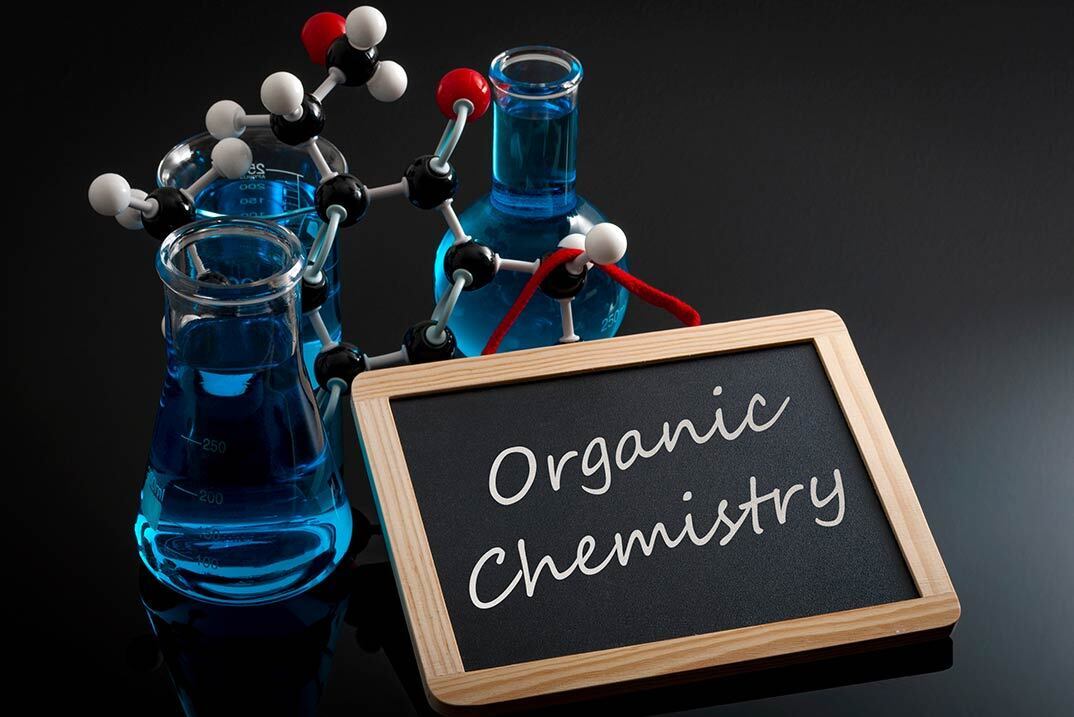Subtotal:
£33.49
Course Curriculum
| Unit 01: About the Course | |||
| Introduction | 00:02:00 | ||
| Unit 02: Drawing Organic Molecules | |||
| How to read bond-line drawings | 00:18:00 | ||
| How to draw bond-line drawings | 00:18:00 | ||
| Identifying formal charges | 00:22:00 | ||
| Finding lone pairs that are not drawn | 00:23:00 | ||
| Unit 03: Resonance | |||
| What is resonance? | 00:05:00 | ||
| Drawing resonance structures (part 1) | 00:40:00 | ||
| Formal charges in resonance structures | 00:19:00 | ||
| Drawing resonance structures (part 2) | 00:25:00 | ||
| Recognizing patterns | 00:30:00 | ||
| The relative importance of resonance structures | 00:19:00 | ||
| Unit 04: Acid-Base Reactions | |||
| Introduction to acid – base | 00:03:00 | ||
| Charged atoms | 00:08:00 | ||
| Resonance | 00:11:00 | ||
| Induction | 00:09:00 | ||
| Orbitals | 00:03:00 | ||
| Charged atoms – Resonance – Induction – Orbitals | 00:07:00 | ||
| Showing an acid-base mechanism | 00:14:00 | ||
| Acid-Base equilibrium position | 00:06:00 | ||
| Unit 05: Geometry | |||
| Orbitals | 00:15:00 | ||
| Goemetry of orbitals | 00:15:00 | ||
| Impact of resonance on geometry | 00:01:00 | ||
| Unit 06: Nomenclature | |||
| Introduction to nomenclature | 00:03:00 | ||
| Functional group | 00:07:00 | ||
| Unsaturation | 00:04:00 | ||
| Parent | 00:09:00 | ||
| Substituents | 00:10:00 | ||
| “cis” – “trans” stereoisomerism | 00:04:00 | ||
| “E” – “Z” stereoisomerism | 00:04:00 | ||
| Localizing substituents in parent chain | 00:12:00 | ||
| From structure to name | 00:20:00 | ||
| Unit 07: Conformations | |||
| Introduction to conformations | 00:02:00 | ||
| Newman projection | 00:10:00 | ||
| Relative stability of Newman projections | 00:08:00 | ||
| Drawing chair conformations | 00:02:00 | ||
| Drawing substituents in chair conformations | 00:12:00 | ||
| Ring flipping | 00:10:00 | ||
| Comparing stability of chair conformations | 00:10:00 | ||
| Unit 08: Configurations | |||
| Introduction to configurations | 00:01:00 | ||
| Locating stereocenters | 00:04:00 | ||
| Determining the configuration of a stereocenter | 00:18:00 | ||
| Nomenclature | 00:12:00 | ||
| Enantiomers | 00:08:00 | ||
| Diastereomers | 00:05:00 | ||
| Meso compounds | 00:04:00 | ||
| Fischer projections | 00:11:00 | ||
| Unit 09: Mechanisms | |||
| Introduction to mechanisms | 00:02:00 | ||
| Nucleophiles and electrophiles | 00:09:00 | ||
| Arrows used for mechanisms | 00:14:00 | ||
| Carbocation | 00:15:00 | ||
| Unit 10: Substitution Reactions | |||
| SN1 SN2 mechanisms | 00:10:00 | ||
| Factor #1: the electrophile | 00:06:00 | ||
| Factor #2: the nucleophile | 00:04:00 | ||
| Factor #3: the leaving group | 00:05:00 | ||
| Factor #4: the solvent | 00:05:00 | ||
| Combining all 4 factors | 00:10:00 | ||
| Unit 11: Elimination Reactions | |||
| Introduction to elimination reactions | 00:02:00 | ||
| E1 mechanism | 00:08:00 | ||
| E2 mechanism | 00:20:00 | ||
| Unit 12: Substitution vs Elimination | |||
| Introduction to substitution vs elimination | 00:03:00 | ||
| Determining the function of the reagent | 00:04:00 | ||
| Identifying the mechanism(s) | 00:11:00 | ||
| Predicting regiochemical and stereochemical outcomes | 00:16:00 | ||
| Unit 13: Addition Reactions | |||
| Introduction to addition reactions | 00:01:00 | ||
| Regiochemistry | 00:05:00 | ||
| Stereochemistry | 00:18:00 | ||
| Hydrogenation: adding H-H | 00:07:00 | ||
| Hydrohalogenation: adding hydrogen halide, H-X | 00:09:00 | ||
| Hydrobromination : adding H-Br | 00:09:00 | ||
| Hydration: adding H-OH | 00:12:00 | ||
| Adding Br and Br | 00:05:00 | ||
| Halohydrin formation: adding Br and OH | 00:08:00 | ||
| “Anti” dihydroxylation: adding OH and OH | 00:07:00 | ||
| “syn” dihydroxylation : adding OH and OH | 00:04:00 | ||
| Ozonolysis | 00:03:00 | ||
| Reactions summary | 00:01:00 | ||
| Unit 14: Synthesis Techniques | |||
| One-step synthesis | 00:03:00 | ||
| Combining reactions: changing the position of a leaving group | 00:03:00 | ||
| Combining reactions: changing the position of a double bond | 00:02:00 | ||
| Combining reactions: introducing functionality | 00:03:00 | ||
| Unit 15: Wrapping Up and Bonus | |||
| Thank you for enrolling and announcing part 2 | 00:01:00 | ||
Review
COURSE REVIEWS
Course Reviews
No Reviews found for this course.






 EXTENDED OFFER ENDS IN
EXTENDED OFFER ENDS IN




